How to Choose the Best Safari Destination - Part 1
[Updated June 2025] Choices, choices, choices. At first glance, the sheer variety of different safari destinations and options can be a bit overwhelming. Where should I go? Which country is best? Which game reserve is best? Where will I see the most wildlife? Where will I get the most bang for my buck? Should I contact a safari operator or just choose a lodge and book direct? In part one of this two-part series, we will help you choose the right destination for your African safari.
The Right Destination
All safaris are not equal, and all safari destinations are not equal. Choosing the right location is important. Some safari destinations are great for a first time safari, others are better suited to a return visit, or for people with a particular interest. Things to consider include reserve size, average cost, game density and diversity, seasonality, accessibility and choice of lodging.
Reserve Size
Africa's biggest game reserves span millions of hectares. Think of the Greater Kruger National Park, the Okavango Delta and Moremi, the Serengeti and Masai Mara ecosystem, and famous national parks like Chobe National Park in Botswana, Hwange National Park in Zimbabwe, South Luangwa National Park in Zambia. These are all popular safari destinations, with good reason. But bigger is not always better. Tanzania's Selous Game Reserve is one of the largest unspoilt wilderness areas in Africa, but for a first-time safari, the game viewing can be disappointing here. And in these big reserves, it matters where you go.
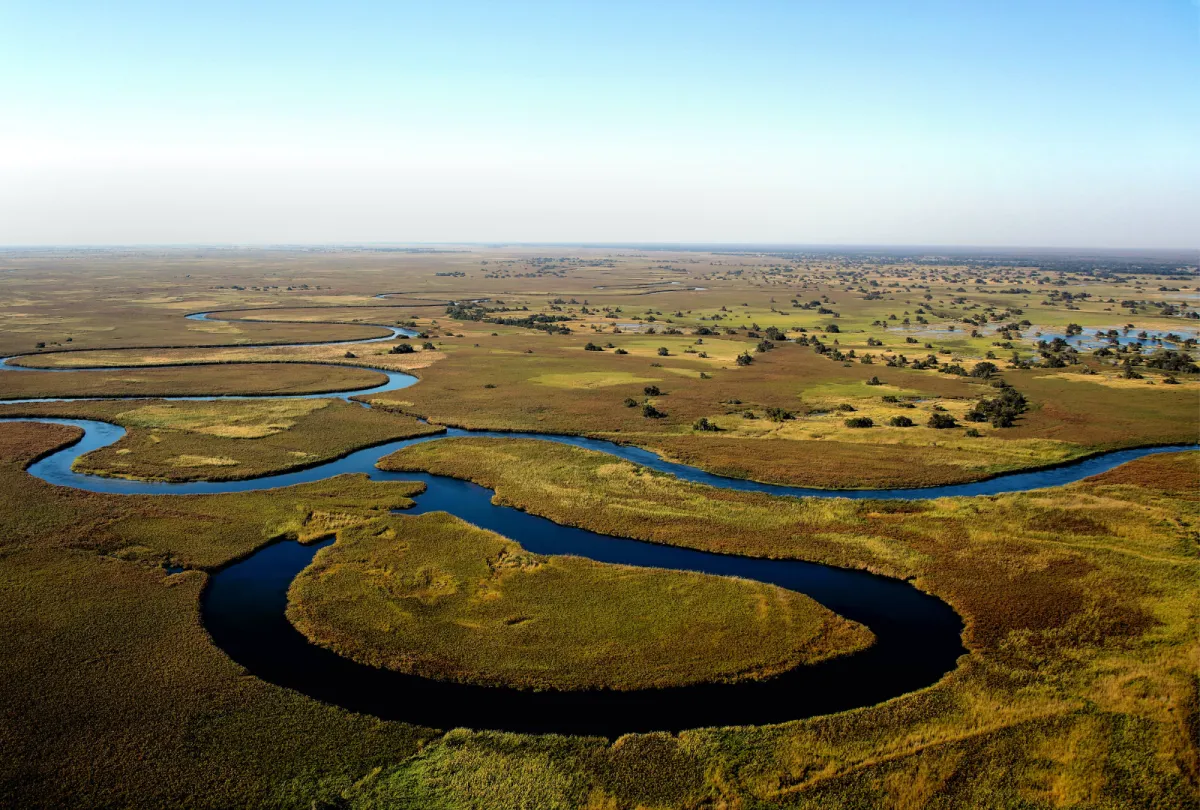
Okavango Delta viewed from the air
A smaller, fenced-in reserve can be an excellent choice, but you need to choose carefully. Some smaller reserves may be a bit artificial and need to be micro-managed due to their small size. In some cases, the lions might be confined to their own separate camp like a glorified zoo, and you might regularly encounter the boundary fence line during game drives.
In general, any reserve below 10,000 or 15,000 hectares is unlikely to give you that wild, unspoilt wilderness encounter. If they have the "Big Five", there will be very limited numbers of elephants and lions, for example. Driving out to an exact spot to see the only pride of lions or the only two elephants on the reserve is a very different safari experience from encountering vast herds of elephants or an unexpected lion sighting in a major game reserve.
But it can still be a good choice for someone with very limited time, who wants to see as many animals as possible over the course of one or two days and doesn't care that it might be a bit "stage-managed". Also, in smaller fenced reserves, the animals can't leave, and some of these reserves are densely stocked with animals (in some cases overstocked) which makes the general game viewing surprisingly good.
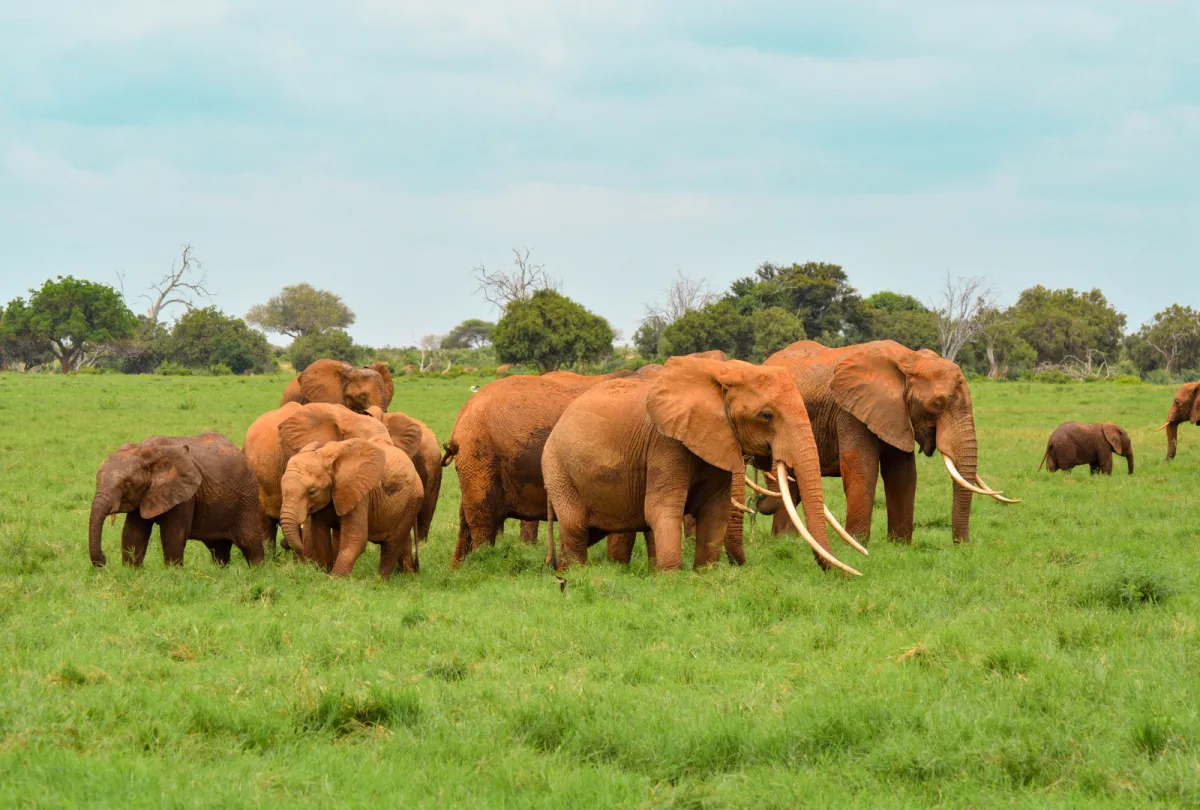
Tsavo East elephants in Kenya
On the whole, bigger game reserves are better for experiencing that remote, unspoilt wilderness feeling. The game viewing itself, however, will depend on many other factors, such as traversing area, seasons and migration patterns, number of vehicles and lodges in the area, availability of water and, of course, plain luck. We will get back to some of these aspects below.
Average Cost
Budget is an important consideration for many safari tourists. So how expensive is an African safari really? There are huge differences in the average cost of different safari destinations. South Africa, for example, is primarily priced in ZAR (South African Rand) which makes it a very affordable destination for those with Dollars, Pounds or Euros to spend. It is very possible to book a reputable private safari lodge within the Greater Kruger Park for under $400 (ZAR 7200) per person per night, something that is virtually impossible to find in Botswana. Or you can join a 4-day guided open vehicle safari in the Kruger National Park, including transfers from Johannesburg, for just over $1000 per person (2025 rate).
By contrast, Botswana is known as a very expensive safari destination. During the peak season, any lodge priced below $1000 per person per night is considered a budget-friendly option, and there are not that many in this price range. Most of the prime safari camps and game lodges in Botswana's top wildlife destinations are priced well above $1000 per person per night. At the top end, you can expect to pay over $2000 per person per night. An additional factor that makes Botswana expensive is accessibility. Most of the more remote lodges can only be reached by light aircraft, so a typical Botswana safari itinerary will include at least a couple of short charter flights, which adds several hundred dollars per person to the overall cost of the safari.
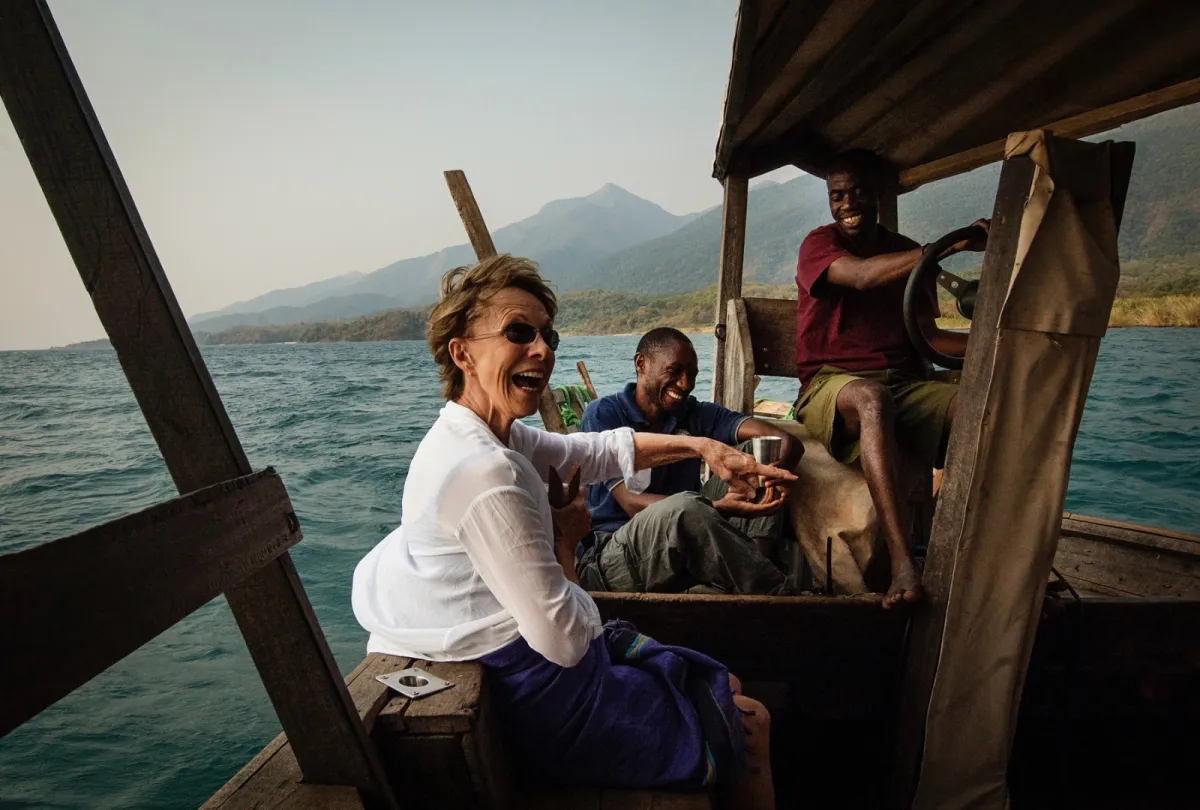
On route to Mahale Mountain National Park in Tanzania
Most of the other prime safari destinations in Africa are priced in USD. Zambia and Zimbabwe are not as expensive as Botswana, but many remote locations will also require flights. East Africa is also priced in USD, and the park fees here are much higher than compared to South Africa, Zambia and Botswana. With a few exceptions, daily park fees of between $100 and $200 per person are the norm.
Namibia is also a popular safari destination, but on par with East Africa in terms of pricing. Rates are payable either in USD or Namibian Dollar (which tracks the South African Rand). But high demand, limited accommodation availability, and vast distances (often requiring flights or long road transfers) are the reasons why Namibia is a more expensive destination to visit than its neighbour, South Africa.
Game Density and Diversity
A wrong choice of location can lead to disappointment. Even in Africa's top game reserves, it matters where you go and when you go. Let's look at three examples: South Africa's greater Kruger Park, Botswana's famous Okavango Delta and Zimbabwe's Mana Pools National Park all have excellent reputations as safari destinations. But all three of these require some understanding in choosing a great location for a safari.
For instance, in some parts of greater Kruger, the game viewing is, without doubt, better and more consistent than in other areas. The far north of Kruger, as an example, is not ideal for a first-time safari but is great for a birding safari. The north of Kruger is dominated by thick Mopane bush, lots of elephants and wonderful birdlife, but the general game is less abundant and, as a result, there are fewer predators. For a first safari, the south of Kruger is the best option. It also happens to boast the greatest diversity of mammals of all major game reserves in Africa.
In some parts of the Okavango, you might not see much wildlife at all and only be able to do water-based activities (no game drives). A water-based location in this area is great for birding but not so great for general game viewing. You might see hippos and elephants and the odd crocodile, but not much general game in these areas. Elsewhere in the delta, some of the floodplains and larger islands have an abundance of wildlife all year round. So it matters where you go.
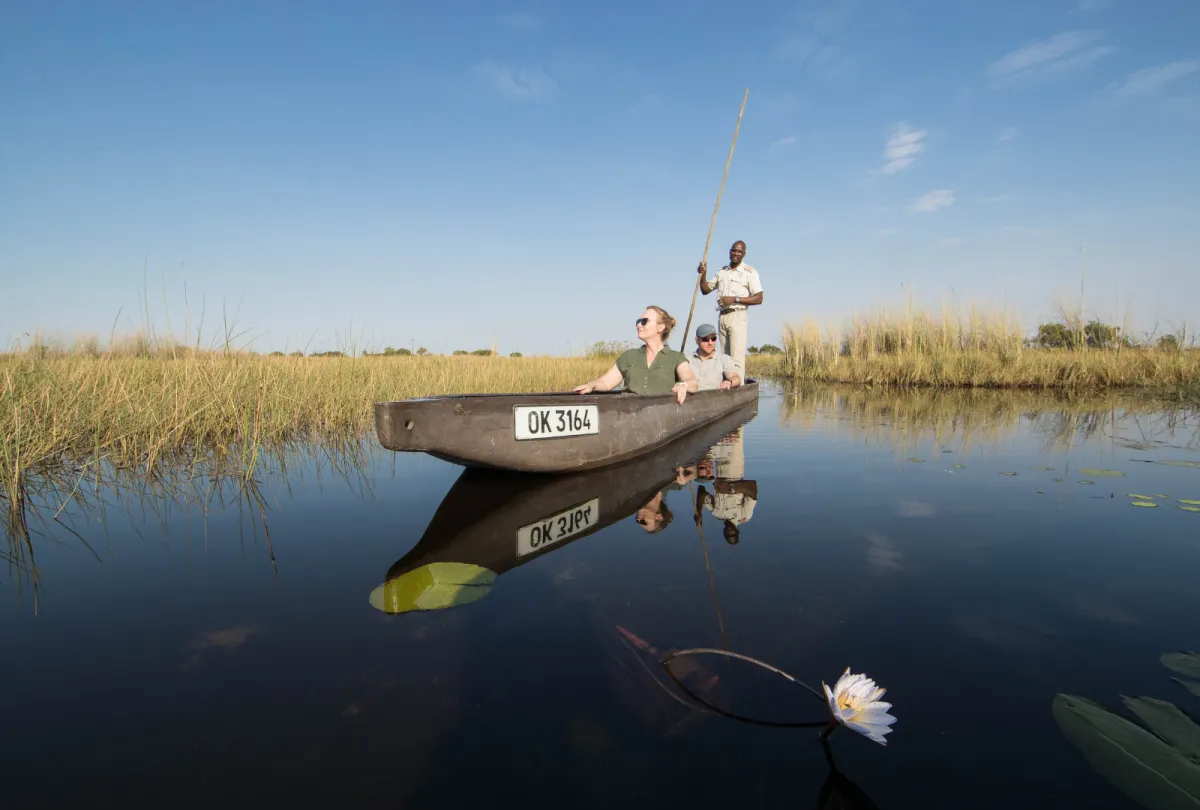
Exploring the Okavango Delta waterways by mokoro
And did you know that Mana Pools has no giraffes? They can't get down the steep escarpment. It's a beautiful national park, but for many people on their very first safari, a giraffe is on the must-see list, so Mana Pools would not be a great location for them. (It is a superb location for walking safaris and for canoeing).
Where can I see Leopards? Giraffe? Rhino? Cheetah?
Another aspect often overlooked is which reserves are best for specific animals. Some people have a particular interest in seeing a specific animal, like elephants, rhinos, leopards or cheetahs. There are some reserves that are known to be great for leopard sightings, cheetah sightings, or other specific animals. And conversely, there are reserves where some animals do not occur at all. We've written a blog post before about where you can see rhinos, leopards, cheetahs or wild dogs (link opens in new window).
But even this information may be out of date, due to changes in populations. Rhinos have been reintroduced into areas where they had disappeared (for example Chief's Island in Botswana) and African wild dog populations may have been decimated by disease in some cases (like what happened in Madikwe Game Reserve a number of years ago). Madikwe's cheetah population has took a knock at some point, due to too many lions at the time. (Both the wild dog and cheetah populations in Madikwe have since recovered nicely, though).
If you have a specific list wish of animals you really want to see on safari, it is worth getting up-to-date information on where's the best place to go for the best chance to see them. The difference this makes can be huge. For example, in the Sabi Sand Game Reserve, leopards are seen almost every day, by most guests. Not far away, in the Balule Game Reserve (also part of greater Kruger), leopard sightings are much less common, and one sighting a week (on average) is the best you can expect.
Seasonality
Availability of water greatly affects game density. Major rivers and permanent water sources, especially during the dry season, will attract wildlife from miles away, and generally make a big difference to the quality of game viewing. This is less of an issue during the wet season. Likewise, annual migration patterns affect game density tremendously in certain areas.
The best example of this is the great wildebeest migration in the Serengeti. Predators follow the migration herds around on their annual trek in search of water and grazing and when the herds are in the far north, the southern plains may appear disappointingly empty. The Ndutu area is a top safari area during the calving season, between January and April, but going there between June and November can lead to disappointment.
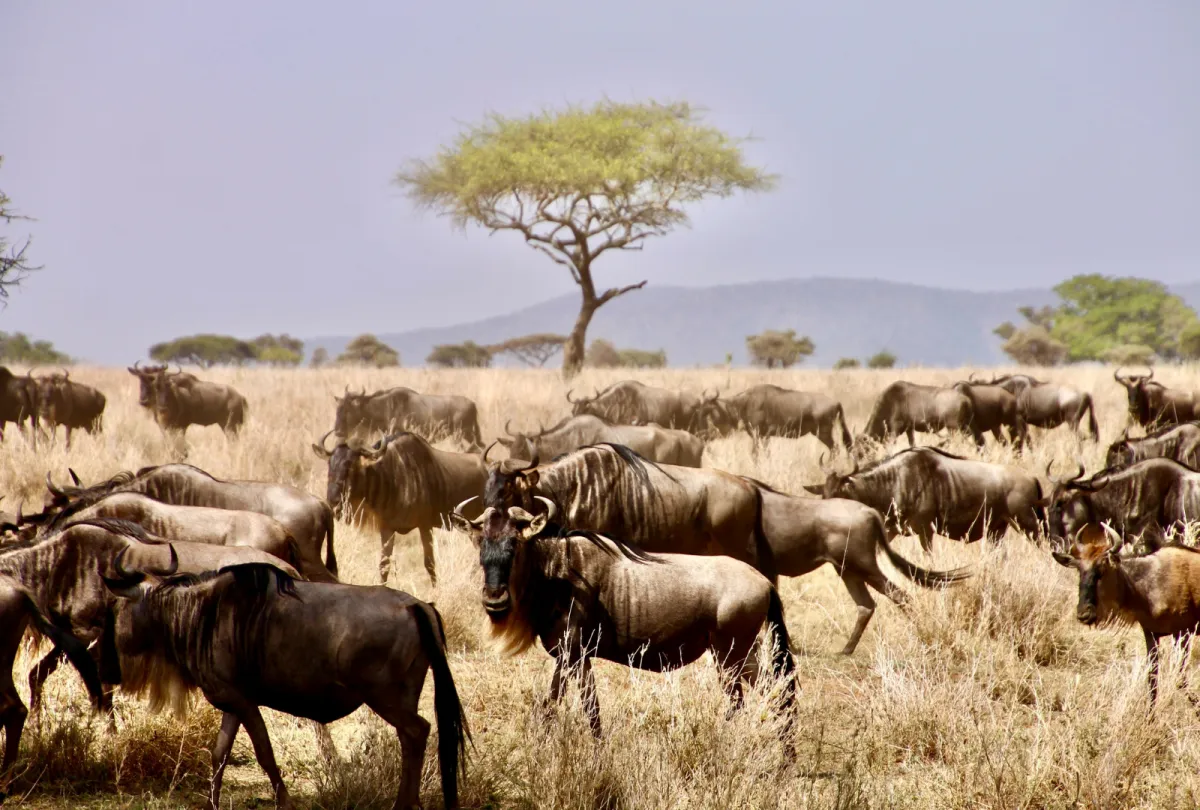
Wildebeest herd, Tanzania
In the Okavango Delta, everything depends on the annual flood levels. These follow the rainy season further north, but the effect is delayed by months due to the time the water takes to flow down into the Delta. The result is that the start of the wet season (November to January) is also the time of the lowest flood levels, while the height of the dry season in July and August is the peak of the flood levels. During peak flood levels, much of the land is underwater and some lodges have no traversing area for game drives during that time and can only do water-based activities or island walks.
Some camps and even some game reserves are closed during the wet season, typically from December to April (or March to May in East Africa). Other game reserves are much less seasonal and offer excellent game viewing all year round. The Kruger National Park is one good example.
Do some research or get some help!
It is clear from everything mentioned above that having adequate knowledge about the various safari destinations in Africa is going to help tremendously with the enjoyment of your safari. Fortunately, researching destinations is easier than ever before. And a knowledgeable tour operator or safari specialist with personal, first-hand African travel experience can be very beneficial.
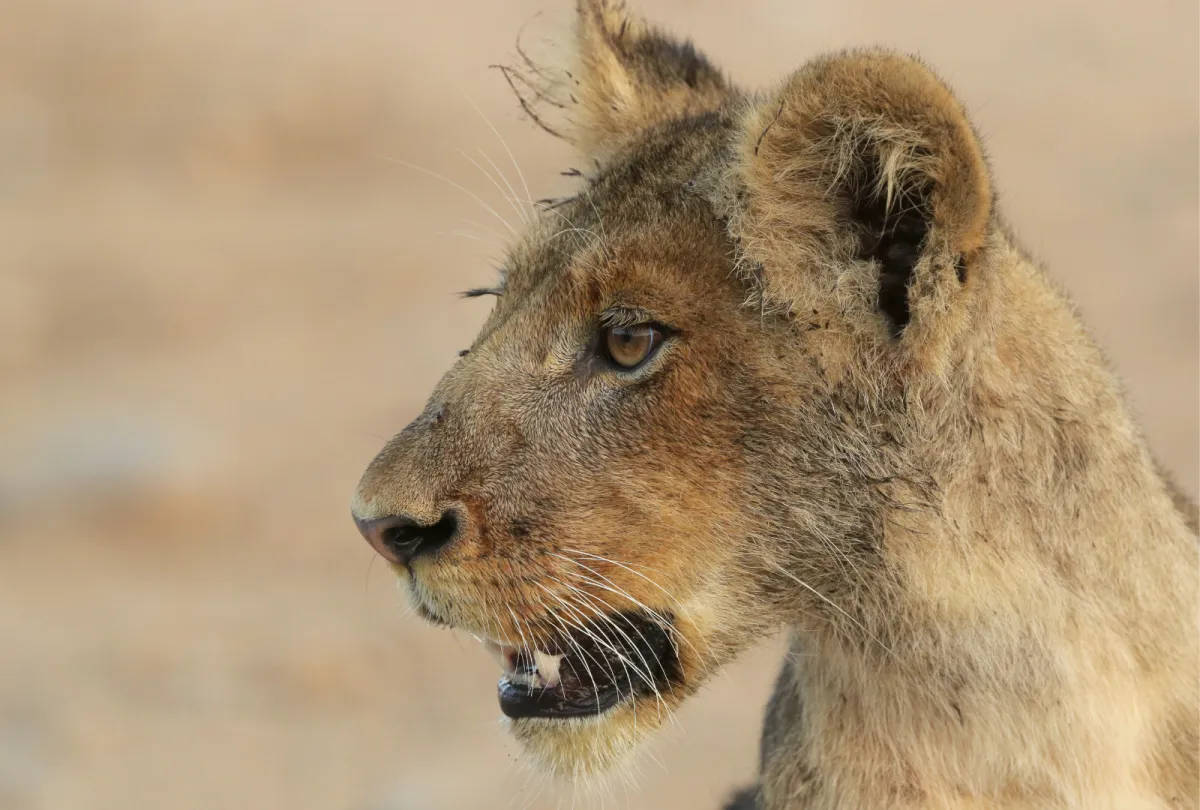
Kruger Park lion cub
Unfortunately, many people approach local travel agents in their home country who have little understanding of African safari destinations and how important all these factors are. If you're going to get some help, at least get expert help and speak to someone who knows Africa and can speak from experience. Booking through a reputable tour operator should never cost you more than booking direct - in fact, it will probably save you money and disappointment.
What are the top wildlife destinations in each major African safari country?
Here are the most popular wildlife regions in seven selected countries where African safaris are popular:
1. Kenya: The Masai Mara
2. Tanzania: The Serengeti
3. Botswana: The Okavango Delta
4. South Africa: Greater Kruger (the Kruger National Park plus the adjacent private reserves)
5. Zambia: South Luangwa
6. Zimbabwe: Hwange National Park
7. Namibia: Etosha National Park
There are of course many other national parks and game reserves that offer superb wildlife viewing experiences, the ones mentioned above are simply the most popular (and in our view, generally the best in each of these destinations).
Choice of Lodge - Does It Matter?
In part 2 of this blog post, we will look at how to select the right lodge. How does one choose a safari lodge? Does it matter if there are 6 or 9 people on a vehicle during a game drive? How important is the traversing area? What about the view from the lodge? How will I know what the game viewing is like? What impact does the lodge size or their child policy make on your safari experience? We understand these variables, and would love to share them with you.
Have you been on safari? Where did you go and how did you select that destination? Please share your experiences in the comments.
You may also want to look at
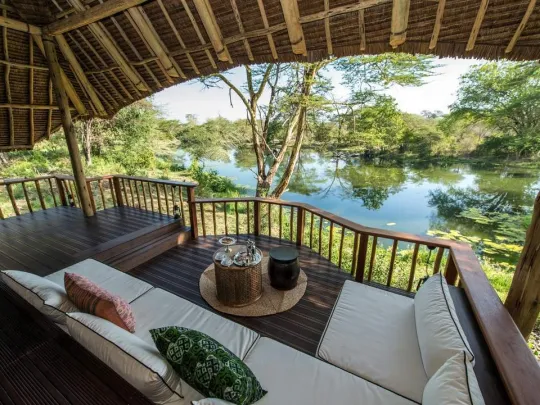
How to Choose the Best Safari Destination - Part 2
In part one of this two-part series, we looked at selecting the best destination or game reserve for your safari. In part two, we will look at how to choose the best lodge or camp for your safari. Grab a coffee and enjoy the read!
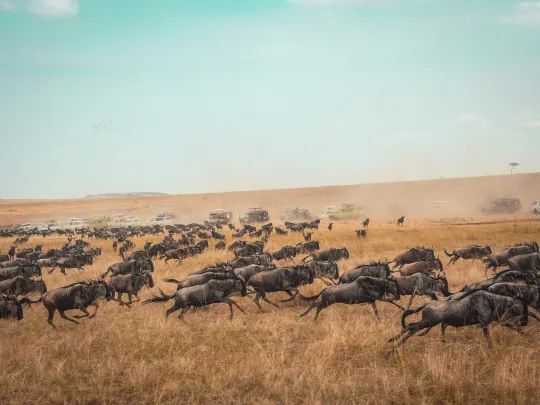
The Great Wildebeest Migration: A Complete Guide
The Great Wildebeest Migration is the largest mass overland migration of wildlife on Earth and the sight of two million wildebeest, zebra and other species moving through Kenya's Masai Mara and Tanzania's Serengeti is a once-in-a-lifetime experience you're unlikely to forget. But how does the migration work and when is the best time to go on a migration safari?
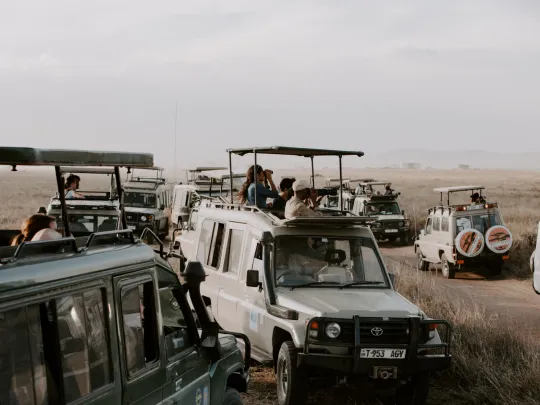
How to avoid the crowds on a Serengeti safari
Every year, almost 200,000 safari-goers flock to the Serengeti in Tanzania to witness the wildlife drama of the Great Wildebeest Migration. If a safari in the Serengeti is on your bucket list but you want to avoid the hustle and bustle, take a look at our tips on how to avoid the crowds.
About the author

Onne Vegter is the managing director of Wild Wings Safaris. He has a deep love for Africa's people, wildlife and natural heritage. Having travelled extensively to Africa's top safari destinations, his writing is based on his personal travel adventures and decades of experience in the safari industry. Follow him on X at @OnneVegter.









